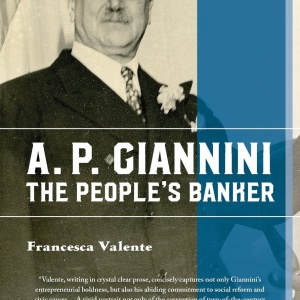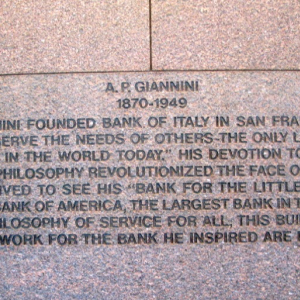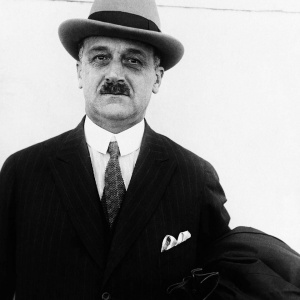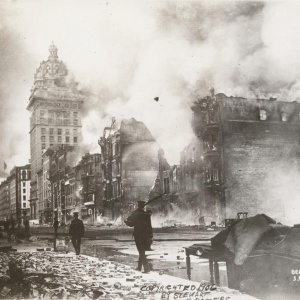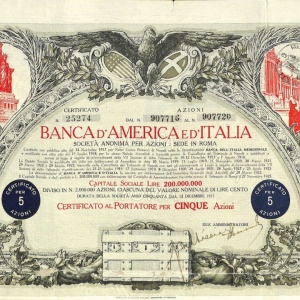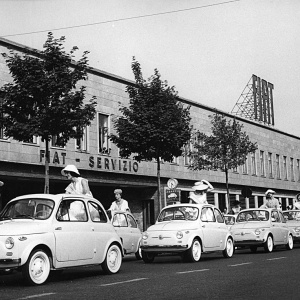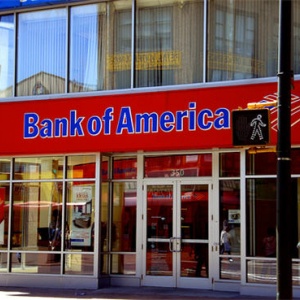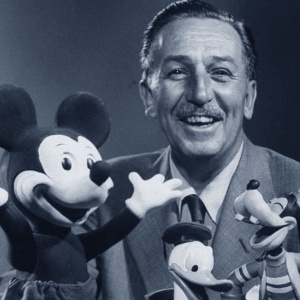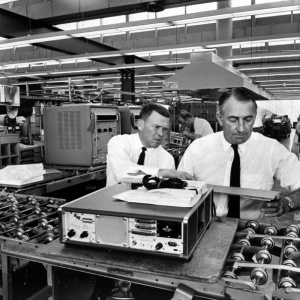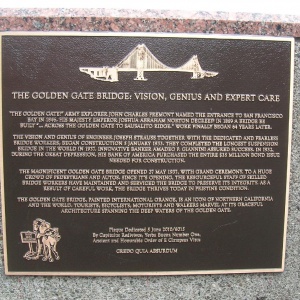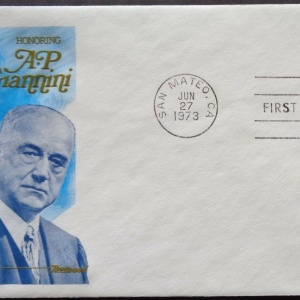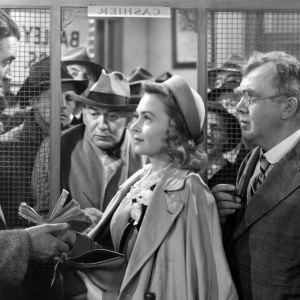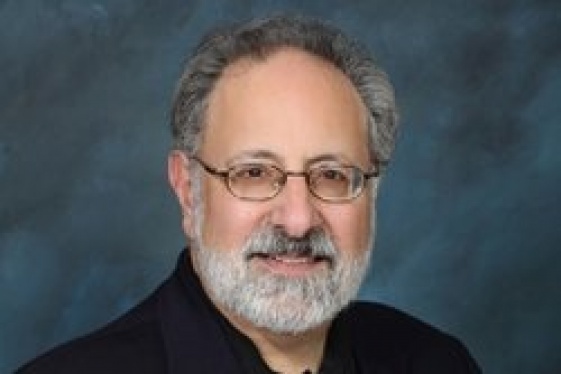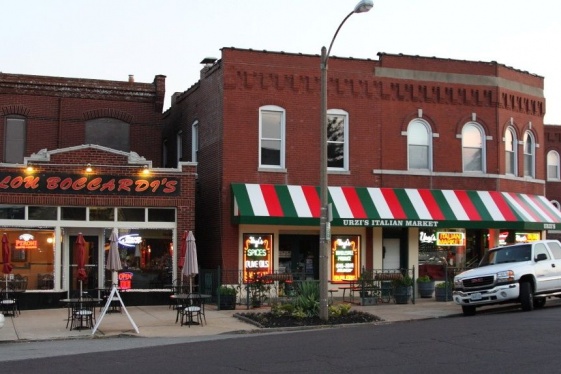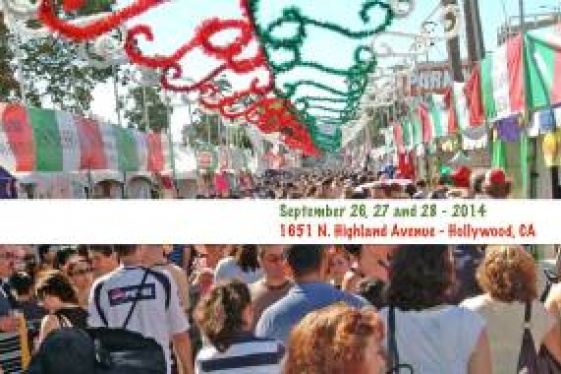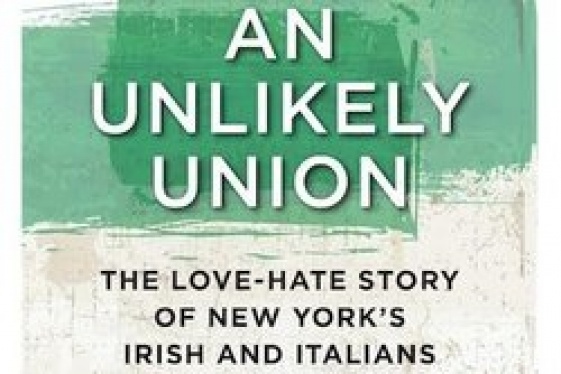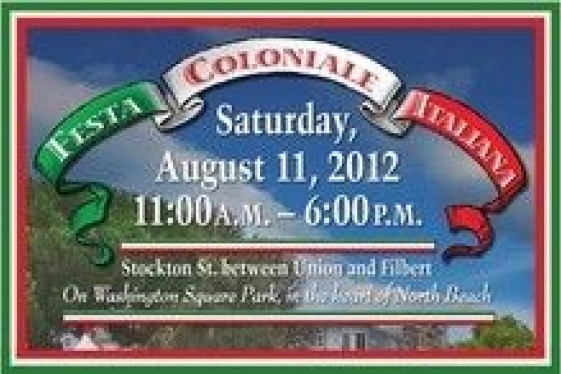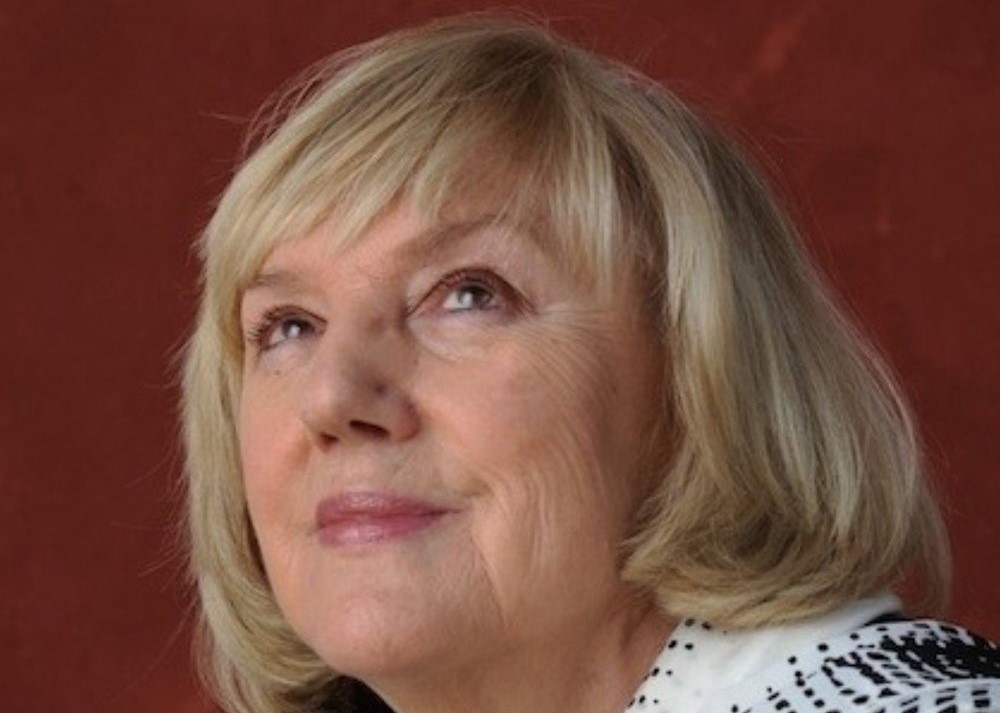
Francesca Valente (Author of the book "A.P. Giannini: The People's Banker")
L'incredibile storia di Amadeo P. Giannini: il banchiere della gente

If there is a story that all Italian Americans and all Italians living in Italy should know, it is the story of Amadeo P. Giannini: he realized the American dream, not only for himself, but for an entire society. There are so many reasons why, today more than ever, the story of his life tells the best part of the Italian DNA, whether you live in Italy or in the United States.
To tell it all is not an easy task: Prof. Francesca Valente did it very well in her book "A.P. Giannini: The People's Banker", published for the series called "The Mentoris Project". Prof. Valente has been Director of several Italian Cultural Institutes in North America, and coordinator of the entire area when she was directing the one in Los Angeles. We welcome and thank her very much for helping us to tell our readers about the life of this extraordinary Italian who died exactly 70 years ago, on June 3, 1949.
Prof. Valente, in the story of Amadeo Peter Giannini we find his parents who left Italy, their son born in America, hard work, innovation and ingenuity, solidarity with other Italian Americans and with Italy, success. We are talking about a universal pioneer, but can we say that this is also a typical story of Italian emigration to the USA?
I'd say not. It's not exactly a typical story, but rather an exception. The stereotype of the Italian immigrant was Al Capone, Frank Sinatra, or the penniless immigrant, always seen in a mostly negative light. The Italian immigrant aspired to a better life, but success was not a foregone conclusion. Giannini's uniqueness was to be able to understand that Italian immigrants were discriminated against and despised; he therefore stood by them to grow both the Italian American community and all of California, which was in a period of great expansion.
There was an interesting confluence of different elements that characterized the success of Giannini, precisely because he was the son of humble origins of this first wave of immigration. His father Luigi went from the gold rush to the creation of a farm, together with Virginia, his wife. A life full of promise was abruptly interrupted when Amadeo, at the age of 7, saw his father die before his eyes for an absurd dispute: he had paid a farmhand a dollar less than agreed. I think this was when Amedeo Giannini became an adult, even if he was only 7 years old.
He somehow, very generously, wanted to help his mother; after four years of mourning she remarried Lorenzo Scatena, who became the
stepfather of her three children. An extraordinary, affectionate alliance was born, full of esteem and willingness to help each other, between Amadeo and Lorenzo, whom the child called Pop. Then, when he was fifteen, Amadeo realized that he had learned everything school could ever teach him. But this did not mean banning culture and education from his life; on the contrary, he always supported his brother Attilio until he got his medical degree at Berkeley.
Amadeo felt, however, that he had to be more and more effective, that he had to improve the standard of living of the family. This led him to go out to the port at night with his stepfather and fit into that multi-ethnic microcosm, which was his actual great school. That is where he understood whom he had to deal with, a very humble low-middle class: the future customers of his bank. He then began to copy all the lists of agricultural products that the ships carried in beautiful handwriting and to actively help the family. He left school and dedicated himself to his stepfather's company, at which he became a partner and sales manager at the age of nineteen.
In 1904 Giannini founded the Bank of Italy. He was one of the first bankers to lend money to middle-class and immigrants, to the entrepreneurs of tomorrow, looking in their eyes for the drive that would ensure that they would do anything to succeed and repay the loan they asked for, without the possibility of guaranteeing collateral and sometimes based on a simple handshake...
His bank was a completely different bank from any other, based on absolute generosity, but above all on a new vision developed by staying in touch with ordinary people. When his father-in-law died, he did not inherit anything: he was simply the executor of the assets helping in investing money for his widow and many children. One of these assets was a stake in the capital of a small bank, the Columbus Savings and Loans. It was a very conservative credit institution, inclined to grant loans only to wealthy customers.
Giannini's intuition, which came from a completely different world, extraneous to high finance, was to radically change the bank's approach. Not being able to convince the members of the Board to a new, more democratic orientation, granting loans also to the less well-off immigrants, without subjecting them to usury, at 34 years of age he managed to found his own bank, the Bank of Italy.
It was not only a question of helping the poorest immigrants to overcome their distrust of the banks, but also of making them grow by encouraging them to become account holders first and then shareholders.
The family-run bank, with a board of Italian businessmen, was also open on Saturdays and Sundays, and in the evenings: Giannini had always had a deep educational spirit towards users. He wanted his account holders to be well informed about what the bank could do for them, just as he had informed farmers at the market back in the day.
After the 1906 earthquake in San Francisco, Giannini was one of the very few bankers who immediately provided funds to rebuild the city, on its knees after being almost destroyed...
Unlike other bankers, Giannini had not intimidated the man in the street: on the contrary, he had created the first bank in a saloon, an open space without private offices. In the same way, after the earthquake he understood before and better than anyone else what was happening. He had the great intuition to bring all the cash of the Bank of Italy to Seven Oaks, his residence in San Mateo. When he returned to San Francisco, the bank was destroyed; if he had not made such a bold decision, all the assets would have been lost. Unlike the other banks that had decided to delay the technical time to access the remaining liquidity after such a tragedy, Giannini had the readiness of spirit to understand that that was the time to start helping the survivors of the earthquake. According to him, it was not necessary - as the other banks claimed - to wait six months before making decisions and then acting.
From an improvised counter at the pier, he began to distribute cash to those in need, giving half of what people were asking for. Why was that? Always for educational reasons: half and not all, because the man in the street had to secure the other half for himself, because he had to build his own destiny, his own future. This was the philosophy of Giannini, who managed to achieve a social utopia by giving confidence to others, using money not for personal purposes, but to improve the living conditions of others.
Giannini's remarkability was to realize the American dream and to share it with millions and millions of Californians, not only Italian Americans. It was the earthquake that made him a national hero, because without profiting he helped everyone to rebuild San Francisco and not to abandon the city. In fact, a year after the earthquake, North Beach - the Italian heart of San Francisco - was the first neighborhood in the city to rise again as timber prices skyrocketed.
In 1919, Giannini's Bank of Italy bought Banca dell'Italia Meridionale, which was renamed Banca d'America e d'Italia in 1922. In 1932 it supported 15% of Italian exports to the United States and after the Second World War it became the bank of reference for the reconstruction of the country, managing 20% of the proceeds of the Marshall Plan, introducing consumer credit in Italy and helping the country recover after the war
Giannini was deeply proud of his Italian origins and was therefore very happy to acquire a bank in Italy, in Naples to be exact, where he then sent his son Mario who began a brilliant career, becoming an assistant to the President.
Giannini had also realized the inconsistency of the American banking system, so it was easier to open a branch abroad than at home. From that moment on, he dedicated the rest of his life to branch banking and went to Canada where this system had been very successful, unlike the United States. In fact, it was the forerunner of what today is the ATM, that is the possibility of having various points where the worker, farmer or entrepreneur could go to withdraw his money in case of need. This is why the Bank of Italy, driven by a true spirit of service, was also open on Saturdays, Sundays and in the evening hours.
The Banca d'America e d'Italia opened 31 branches and came to have assets of 30 million dollars. It survived Fascism and the war, and became the bank of reference for the reconstruction of Italy. Giannini managed to include it in the aid program of the Marshall Plan: he wanted to revive Italy and in particular the industries that had been destroyed during the Second World War. He supported Fiat, Alfa Romeo and many other industries. RAI and some universities also benefited from this contribution.
In 1929 the Bank of Italy merged with the Bank of America, and Giannini led the new bank until 1945...
The process was a bit more complex than that. In those years, Giannini had tried at least three times to retire, because he was a very generous spirit and wanted to leave room for young people: but he had never succeeded. Since the founding of the Bank of Italy, his dream had been to make it to New York, thus building a bridge between the American West and East. He arrived in New York where the financial group of JP Morgan, an extremely snobbish and conservative New York group, did not appreciate the emergence of a newly rich former farmer and looked at him with great contempt.
Giannini continued his plan by creating the Bank of America, but at a certain point he made a mistake. Feeling confident in choosing Elisha Walker as his successor, he retired. He soon understood he made the wrong choice: Elisha Walker, a Yale graduate, was part of that elite group close to JP Morgan and within a few years he cleverly tried to dismantle the entire structure of the Bank of America and its subsidiaries.
Despite his poor state of health, Giannini had to get back in, appeal to the shareholders and, with a masterful coup, regain the command of the Bank of America. He headed it until the year of his death in 1949 at the age of 79. He realized that he should have preferred his son Mario to the Yale's graduate.
For years and years Giannini had received a symbolic salary of one dollar a year, plus a reimbursement of expenses. He didn't want to become rich because he was convinced that wealth would end up owning him, and not the other way around. He had great respect for money, but only if used well and for social purposes to improve his life and that of others. When the bank assigned him a million and a half dollars, which was 5% of that year's earnings, Giannini did not cash the check but donated it to the University of Berkeley for the foundation of a chair of agriculture. Giannini was never embarrassed to recognize his origins: indeed, he was proud to be the son of farmers of humble origins and wanted this discipline to have a scientific and academic depth. The same thing happened with the establishment of a chair, still existing, of Italian language and culture at the University of Berkeley.
Giannini was also an exceptional forerunner of modern Venture Capital: he helped Hewlett and Packard to give life to their company and in fact to the whole Silicon Valley, he was among those who allowed the construction of the Golden Gate Bridge, and the only one who believed in the visionary who wanted to make a feature cartoon movie, Walt Disney
He knew the potential of every historical moment. In the war period, for example, he helped large companies to transform by adapting to the needs of the time, and then helped them to reconvert again once the war was over.
As far as the film industry is concerned, he saw not only its interest as a source of investment, but also its cultural value. The film industry in which Giannini began to invest was mainly promoted by Jewish immigrants, who were marginalized and discriminated against, like the Italians. He understood the social value of this new art that, unlike opera, could guarantee everyone, a new form of entertainment for a few dollars, allowing them to daydream about a better future.
In the same way, the investment in the Golden Gate Bridge created a social utopia. By financing Joseph Strauss, the German-born engineer that no one had taken seriously, Giannini created thousands of jobs in the midst of the Depression. The Golden Gate's gamble at the area's most treacherous location meant not only a link between Southern California and Northern California but also opened access to the entire northern United States.
It was an incredible challenge. In the midst of an economic crisis, at a point where the currents were very strong, at a time when the federal authorities had already invested in another bridge, the Bay Bridge.
In 1973 the American postal service issued a commemorative stamp, while Time Magazine described Giannini as one of the "builders and titans" of the 20th century. He was the only banker included in Time 100, a list of the most important characters of that century.
Certainly he was acknowledged because when Amadeo Giannini died in 1949, Bank of America was the world's largest private bank with 517 branches. His dream had come true after so much suffering, so many enemies, so many battles won in a very bold way and with branches not only in California, but in all the United States and in China, Japan, the Philippines and the Far East.
I would also like to point out that, although he founded what became the largest private bank in the world, Giannini's personal capital, when he died, was lower than that it was before founding the Bank of Italy. His goal was not to get rich, but to improve the quality of life in California. This is his originality, because he succeeded in transforming the working class into the middle class, making a social and economic leap for Californians and the Italian immigrants, who were previously ignored and marginalized. Giannini gave them dignity, helped them to become American citizens, aware of their European roots.
In addition, he fought all his life for the values he believed in. He was against money as an end in itself: madness for a banker. There was a deep respect for money in him, but only if used to improve the lives of others. In fact Giannini never financed any speculator, but only those who wanted to buy a house, a car: to do so he invented the credit card. He was able to build a social utopia.
The funeral of Giannini was attended by many representatives of the world of finance, but also farmers, entrepreneurs, merchants, ordinary people who had their lives changed by his vision: it is no coincidence that his book is called "A.P. Giannini: The People's Banker". Is it true that the character of George Bailey in Frank Capra's It’s a Wonderful Life is inspired by Giannini, who was very close to Capra?
I'm not sure: maybe yes, in some ways, because in the movie Bailey was extremely altruistic and always wanted to help others. In this I feel the protagonist of It’s a Wonderful Life by Frank Capra can certainly be inspired by Giannini for his extraordinary generosity. But Giannini had also distinguished himself for his resilience, for his spiritual strength in facing every adversity. He had eight children and six died of hemophilia. Any other human being would have withdrawn, closed himself up in his bank and received no one; instead, he continued to help others realize their dreams.
Giannini was a very spiritual man: he was deeply religious and Catholic, but not bigoted, he also helped many churches of other denominations. He had within himself the spiritual strength of those who had overcome adversity, always thinking of that episode as a child that had marked him forever: the death of his father for not giving an extra dollar to a worker, as he had asked him. I think that, in tragedy, this cathartic event changed his life, prompting him to give money its rightful value.
You may be interested
-
'Phantom Limb': A Conversation With Dennis...
Dennis Palumbo is a thriller writer and psychotherapist in private practice. He's the auth...
-
“The Art of Bulgari: La Dolce Vita & Beyond,...
by Matthew Breen Fashion fans will be in for a treat this fall when the Fine Arts Museums...
-
“The Hill” St. Louis’ Little Italy
When the fire hydrants begin to look like Italian flags with green, red and white stripes,...
-
13th Annual Galbani Italian Feast of San Gen...
In September of 2002, some of Los Angeles' most prominent Italian American citizens got to...
-
1st Annual Little Italy Cannoli Tournament
Little Italy San Jose will be hosting a single elimination Cannoli tournament to coincide...
-
An Unlikely Union: The love-hate story of Ne...
Award-winning author and Brooklynite Paul Moses is back with a historic yet dazzling sto...
-
Candice Guardino Brings GILDA AND MARGARETTE...
Candice Guardino is adding to her list of successful theatrical productions with the debut...
-
Festa Coloniale Italiana 2012
We are very excited to announce that on Saturday, August 11, The San Francisco Italian Ath...





